5G has yet to really take off, as it’s only available in a few cities, but a recent report publishes by Ericsson provides some forecasts for the future of 5G and cellular IoT connectivity, as well as interesting numbers of the current state of cellular networks.
There are now 7.9 billion mobile subscriptions, more than humans, including 5.7 billion mobile broadband subscription, with Asia clearly dominating the field due to its much larger population.
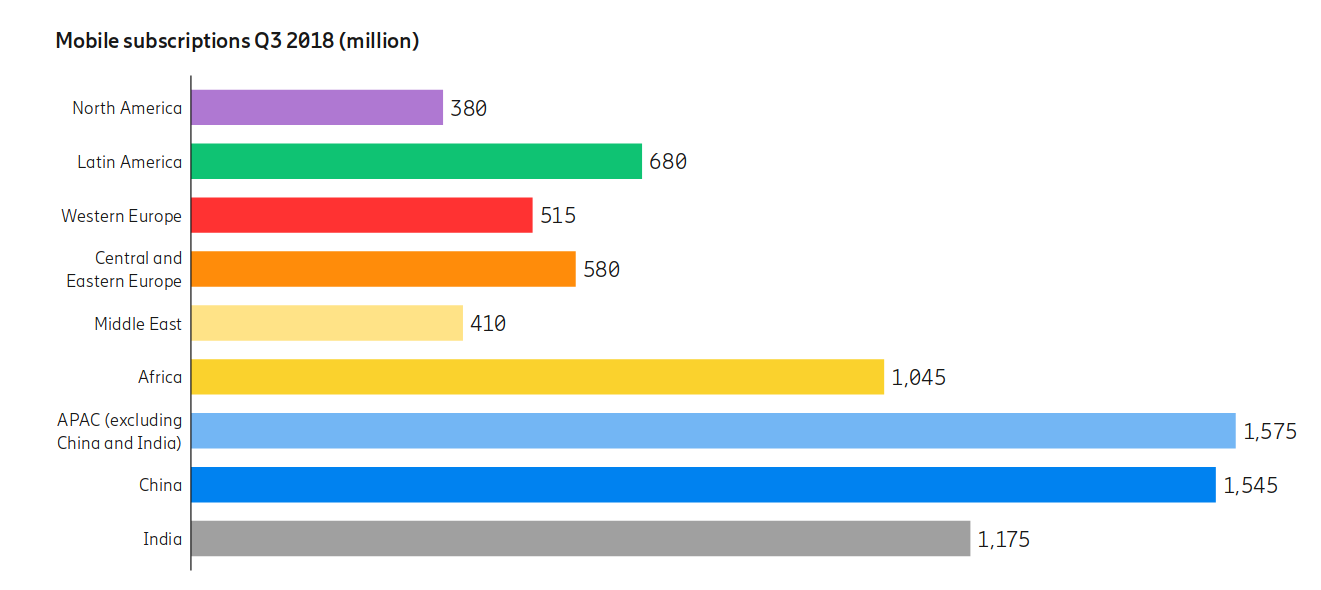
Asia also accounts for most of the recent growth in subscriptions, and interestingly people in Central and Eastern Europe (including Russia) especially appears to need more than one mobile subscription with 142% penetration, which means on average one person has 1.4 mobile subscriptions. There are more subscriptions than people in most of the continents/countries, but to a lesser extent, and India (87%) and Africa (82%) are the only exceptions.
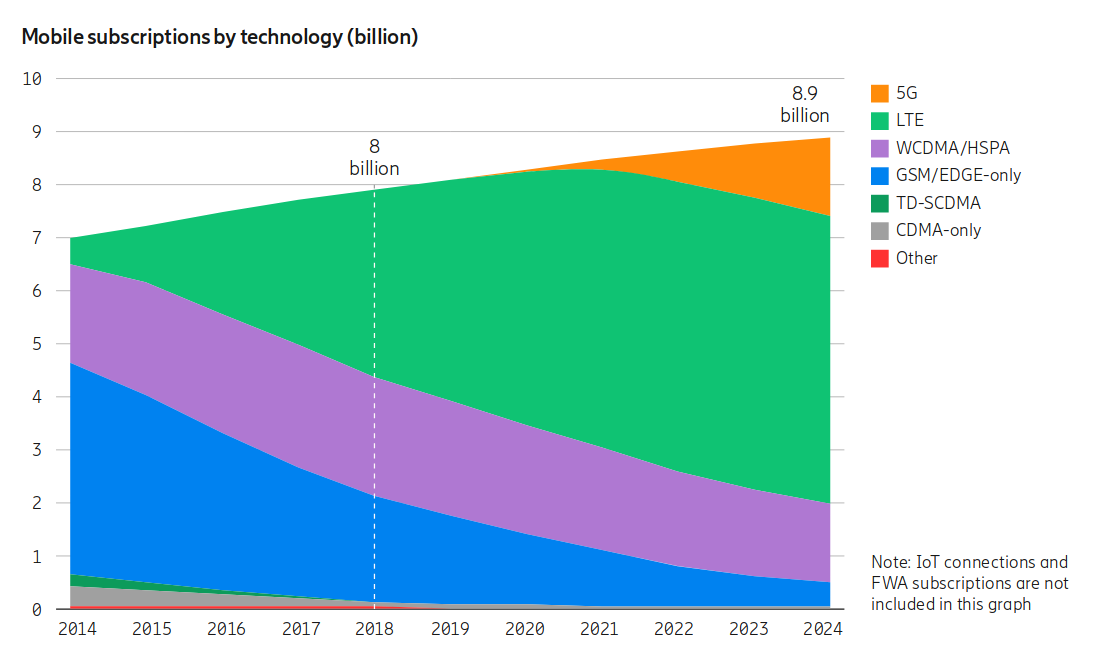
The chart above allows us to look at both the current trends and the future. We can see 2G subscriptions have been declining for several years, with 3G looking somewhat stable, and 4G growing steadily in the last 4 years. With the launch of 5G, 4G is expected to start declining – or at least stop growing – around the year 2022, with 5G growing fairly rapidly from 2019 to reach 1.5 billion subscribers in 2024. Provided the forecast turns out to be accurate, that year there will be 8.9 billion mobile subscriptions, 8.4 billion mobile broadband subscriptions and 6.2 billion unique mobile subscribers.
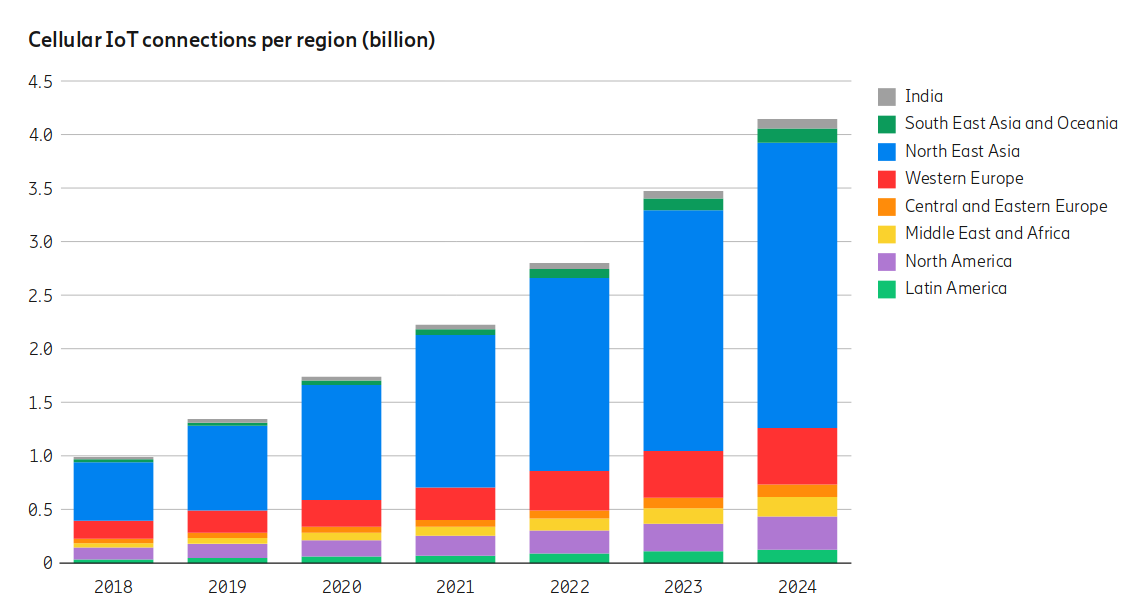
Cellular IoT is expected to grow much faster from about one billion devices now to over four billion in 2024 lead by growth in North East Asia, which should mean mostly China.
5G network deployment will take time, and depending on where you live it may take time to get coverage. While around 95% of the world’s population is already covered by 5G networks, 4G networks are only expected to reach about 90% coverage in 2024, and 5G should only have a little over 40% coverage at that time.
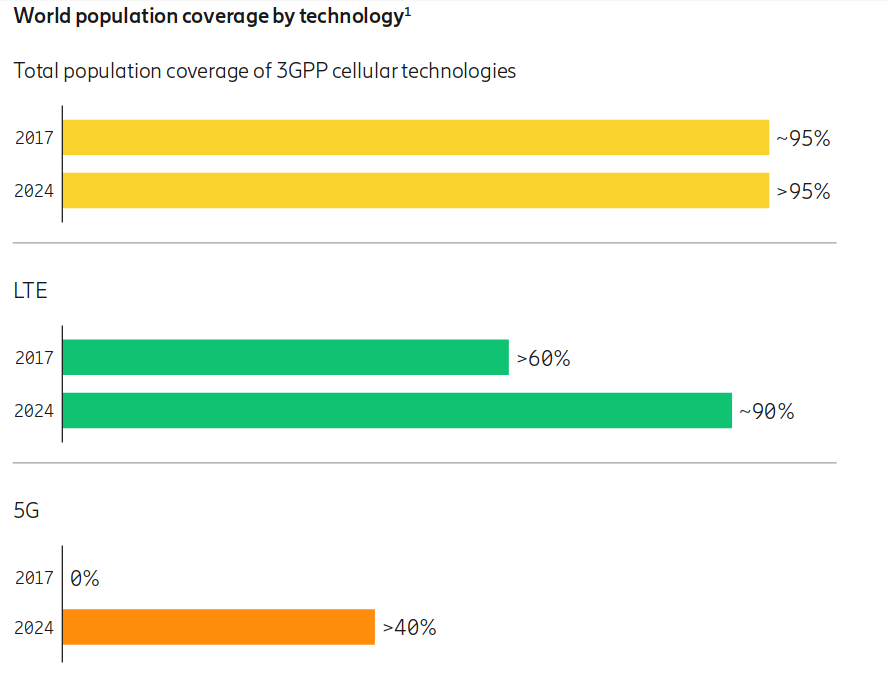
Coverage will likely vary a lot by country depending on network deployments, but Ericsson’s report did not provide a breakdown by country or region. However, we can see 5G penetration is expected to increase rapidly in North America, and Western Europe, as well as in North East Asia but to a lesser extended in terms of percentage.
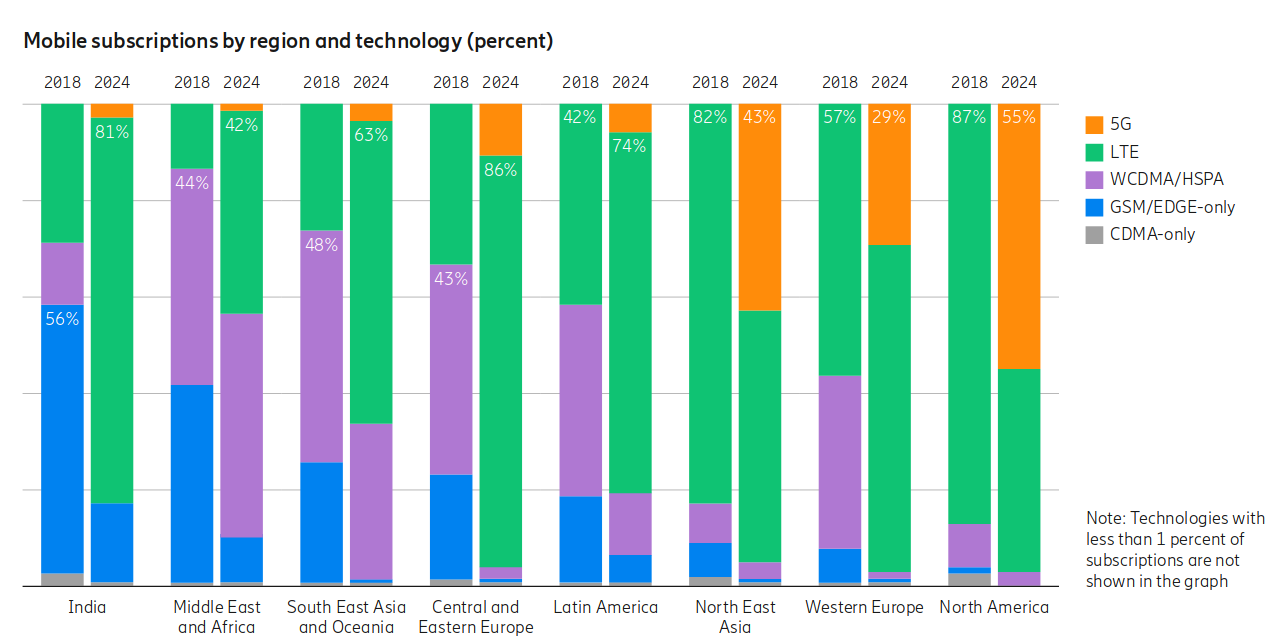
According to the forecast, 2G will be completely shut down in North America in 2024, but other regions will still be using it, albeit only for a small fraction of subscriptions.
You can find more interesting charts and insight in Ericsson Mobility Report November 2018.

Jean-Luc started CNX Software in 2010 as a part-time endeavor, before quitting his job as a software engineering manager, and starting to write daily news, and reviews full time later in 2011.
Support CNX Software! Donate via cryptocurrencies, become a Patron on Patreon, or purchase goods on Amazon or Aliexpress




